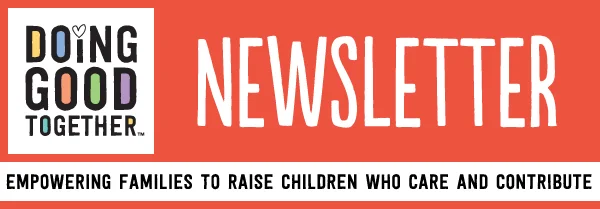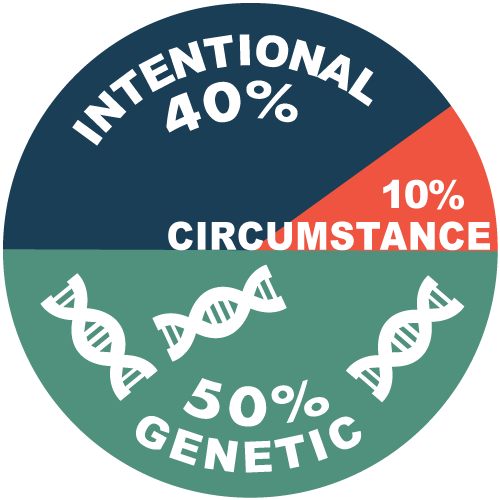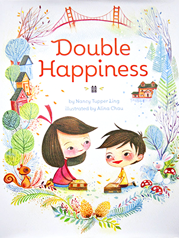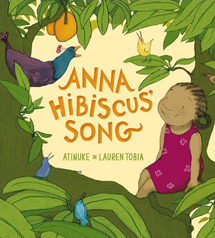5 Myths about Raising Happy Kids
5 MYTHS ABOUT RAISING HAPPY KIDS
All parents want their children to be happy. But too often we misdirect our energies as we try to ensure our children will lead blissful, fulfilled lives. Despite a spate of recent research, it's still not clear what "happiness" is, much less how to guarantee it for ourselves or our kids. But we do know some of the factors that can lead to joy -- and which, despite their seduction, are unlikely to bring lasting contentment. Here's a rundown.
-Jenny Friedman, Executive Director
MYTHS AND REALITIES
Make a Difference.....
Here's what you should and shouldn't do to raise a contented kid.
Myth No. 1. Happiness is genetic, and you can't change your child's happiness "set point." There is definitely a genetic component to happiness, say researchers. About 50% is determined by our genes. But studies also indicate that life circumstances account for only 10% of happiness. That means intentional activities can play a major role.
Enhance joy: Some happiness-inducing activities: develop meaningful relationships, nurture an optimistic attitude , practice gratitude , and spend time "doing for others." Each of these, when they become daily habits, can improve life satisfaction.
Myth No. 2. You can position your children for success with an intense focus on achievement. Researchers warn that prioritizing grades and focusing on accomplishments can lead to stress, cheating and a fear of failure (which discourages kids from taking on new challenges).
Enhance Joy: Practice a "growth mindset" with your children by highlighting the importance of effort, not results. Be explicit that kindness and caring matter more than achievement. Ironically, although pushing success doesn't lead to happiness, happier people do tend to be more successful.
Myth No. 3. Continually provide your children with pleasurable experiences. Although scientists are still studying the differences between "meaning," "happiness" and "pleasure," it's clear that frequent trips to Dairy Queen and Chuck E. Cheese's aren't the road to contentment. Plus, attempts to keep your child happy every minute can lead to egocentrism and self-absorption.
Enhance Joy: Even as you have fun together, devote time to being your children's "emotion coach." This means helping them learn how to deal with the disappointments and frustrations that will certainly arise. How? Teach your kids to be aware of their moods and feelings, first by learning to label them. Then practice problem-solving conflicts together. You might also consider instituting a family meditation practice , an effective technique for coping with life's inevitable ups and downs.
Myth No. 4. You can buy happiness by purchasing the toys, video games and electronic gadgets your child wants. As most parents can attest, material possessions (despite what advertisers promise) rarely boost our kids' (or our own) happiness for long.
Enhance Joy: If you want to buy a little bliss for your child, giving away your money is actually more effective than spending it. Start a mini-family foundation and decide with your kids what causes to support. Or spend some money on materials to do an at-home service project . Or set aside some dollars for targeted acts of kindness, like handing out $5 gift cards at your local coffee shop or paying for the person behind you in line.
Myth No. 5. Physical activity and time in nature are just short-term responses to anxiety and depression. Actually, these activities, when part of your family's routine, can have long-term benefits, including better mental and physical health.
Enhance joy: Make getting outside a daily habit. Ride bikes. Go swimming. Take hikes. Lace up some ice skates. And be sure to provide lots of time for unstructured play.
MAKE CARING A HOT TOPIC
Talk About It.....
Researchers have found that families that talk about giving and serving are more likely to have children who take action. As you make kindness a routine, let your children know how much you value it. Say things like:
- Our family treats people with kindness and respect.
- We are the kind of family that helps people who are in need.
- I think caring for others is more important than a grade on a test.
- We help others when we can, but sometimes our family needs help, too. The world is a better place when people help each other out.
Learn About It.....
These children's books provide other ways to spark conversations with your children about what happiness means to them.
The Jar of Happiness by Ailsa Burrows. Ages 3 and up. A sweet story that explores the true meaning of happiness.
Double Happiness by Nancy Tupper Ling. Ages 5 and up. A Chinese-American family helps their children cope with the difficulties of moving by giving each a "happiness box" to fill.
Anna Hibiscus' Song by Atinuke. Ages 5 and up. The beautifully illustrated story of a young African girl and how her happiness grows and grows.
INSPIRATION
"If you want others to be happy, practice compassion. If you want to be happy, practice compassion."
-Dalai Lama







